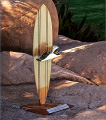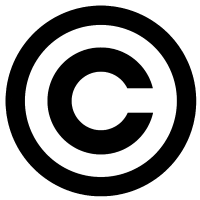International Surfboard Builders Hall Of Fame Inductee Details
Sadly, over the years websites that have links here will change or be abandoned from the time that they were posted here so the will not be found.
| Inductee Name Greg Loehr | Event Year 2016 | Inductee Location Tucson, Az & Indian Harbor, Fl | Inductee Contact |
| Inductee Brand | 
|
||
| Inductee Boardshop |
Boardshop Link |
| Inductee Bio
Greg Loehr (August 26, 1952-) "The biggest mistake the board industry makes today is they're afraid to make a mistake. Successes are bullshit; you learn nothing from successes. Mistakes are what pay off. And I've made more mistakes than anybody." -- Greg Loehr Part mad scientist, part angry protestor, Loehr is one of surfing's true activists. From fighting to reverse East Coast surfers' negative reputation to subverting stodgy surfboard design, Loehr has constantly strived to change peoples' minds and, in the process, has earned a revered, oddball status as one of our sport's most legendary lunatics. Born in 1952 in Brooklyn, New York, Gregory Allen Loehr and his family roamed through a variety of different states before settling in Cocoa Beach, Florida, where the 13-year-old quickly grew to love surfing and hate the confines of traditional thought. "I skipped a whole lot of school," Loehr blurts with a laugh. "I was very bored." Once away, the truant Loehr would go one of two places: the library or the beach. And while his curious, self-motivated approach to learning would serve him much later, his time on the water brought almost instant rewards. Cocoa Beach in the late '60s was filled with top East Coast surfing names, and in 1967, Mike Tabeling picked up the skilled, lanky goofyfooter for his newly formed Weber team. As a competitor, Loehr quickly built his reputation, despite surfing a limited amount of contests in the free-and-easy '70s. After two second-place showings, Loehr finally won the prestigious 4A Mens division at the East Coast Championships in 1974 -- the top coastal event of the time -- relying on a radical, vertical approach. Loehr would also prove threatening off the coast, winning the Lacanau Pro in 1979, and his earlier competitive prowess earned invites to the Smirnoff and Duke events in Hawaii in 1974 and 1975. It was here that he first encountered ridicule against East Coast surfers. Once the media took note of his animated and outspoken personality, mags became peppered with Loehr's attacks on what he perceived as an ingrained prejudice against the East Coast surfing community, earning Loehr an early reputation as a hero back home -- and a dissenter abroad. But his most lasting contributions would not occur in contests or the magazine columns; they would happen in the factory. Loehr had been building surfboards in his garage since high school, but in 1973, he began laminating for burgeoning East Coast label Natural Art. A year later, he was its top shaper, and as his popularity grew he added labels and riders, at one point making boards for 10 of the 12 top-ranked riders on the East Coast. Instead of following trends, Loehr took risks, investigating the fringes of surfboard design and other water sports, using his reputation to support his inventive ideas. Then, in 1982, while working for surfboard and sailboard manufacturer named Fox, Loehr stumbled across the first innovation in surfboard materials since balsa became obsolete. "They were building epoxy sailboards in Europe," he recalls. "The fact that we could make a 10-pound board weigh only 5 pounds was huge, and we picked up on it immediately." Suddenly, Loehr's high school days as a guerilla bibliophile came in handy, as he began researching ways to incorporate the technology into surfboard design. "The original sailboard was supposed to be UV stable and it wasn't, so I happened upon a resin and then I modified it to make it harder," Loehr continues. "We made two sailboards and two surfboards that first week." Thus began one of surfing's longest philosophical battles to date. While design movements such as shortboards and thrusters almost immediately swept the industry, epoxy faced its share of setbacks. Clearly, the boards were lighter, but difficulties with early materials made them unstable after being exposed to prolonged periods of heat and sunlight, often causing yellowing, leaking and delaminating. When boards started exploding in the backs of cars, epoxy suddenly didn't seem like such a hot idea. But Loehr remained convinced that he could build a better mousetrap. And once recognizing epoxy's benefits of being recyclable and less toxic, he set off on a crusade to make lightest, strongest most environmentally friendly surfboard possible. The result was Resin Research -- Loehr 's company committed to the ongoing cause of advancing surfboard materials. His goal? Simple. To make polyester as extinct as the decomposed dinosaur remnants that provide its necessary petroleum. And, in combination with his design label Greg Loehr Surfboards, he almost single-handedly kept the technology alive in U.S. surf markets for 20-plus years, unleashing newer formulas, testing materials and writing sermons meant to convert the world at large. (He also kept busy with design ideas, resurrecting concaves from some early Dick Brewers and ultimately sending a board south to Oz that would inspire Greg Webber and make them the most popular of bottom contours.) Despite his efforts, epoxy's fans remained almost solely clustered in Florida and the Santa Cruz area. Then, in 2005, the unthinkable happened: Clark Foam - the once-mighty Poly-urethane blank monopoly --shut its doors overnight, panicking the industry for new sources of foam. Once a fringe market, shapers began seeing epoxy as a quick fix with endless supply. And upon, testing, they discovered both a reliable, trustworthy way to make lighter, stronger boards -- board that could compete with influx of molded models by companies like Surftech. By 2009, most major factories had epoxy in their catalogs. And many top pros had at least one or two epoxy-based options for tiny waves or just a different taste, including Kelly Slater and Dane Reynolds. Taj Burrow even switched completely to Firewires, a sandwich construction that mixes parabolic rails, vacuum bagging and wood veneers -- all impossible ideas without epoxy construction. All ideas that Greg toyed with, even touted, at times. Today, Greg is supplying nearly all every major manufacturer with resin form his headquarters at chemical lab in the Arizona desert. And though he earned his rightful spot in the East Coast Surfing Legends Hall of Fame more than a decade, epoxy's validation may be his greatest reward. The craziest part about Greg's story? With EPA laws growing stricter and board materials actually improving --every year, Loehr looks less like some crackpot Chicken Little and more like a prescient pioneer of things to come. -- Matt Walker | |||
| For the complete biography, go to: | |||

Thanks to: http://encyclopediaofsurfing.com/entries/loehr-greg for the photo | |||
Links East Coast shapers Rick Carroll and Greg Loehr give us the lowdown. GrindTV.com |





